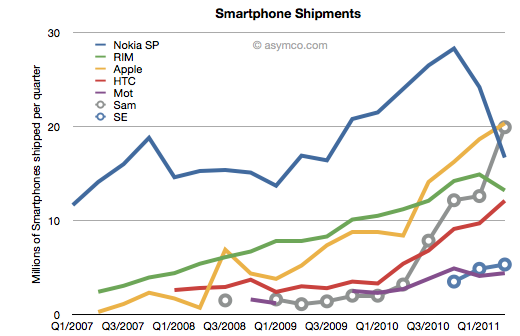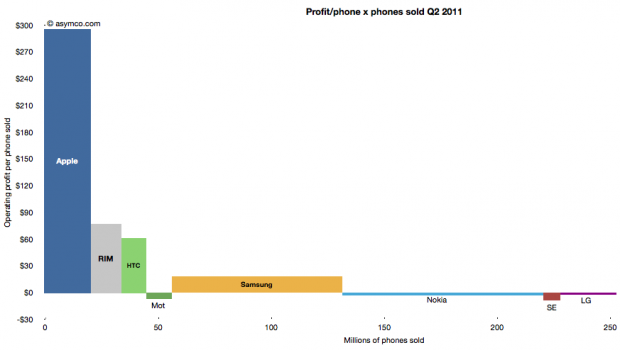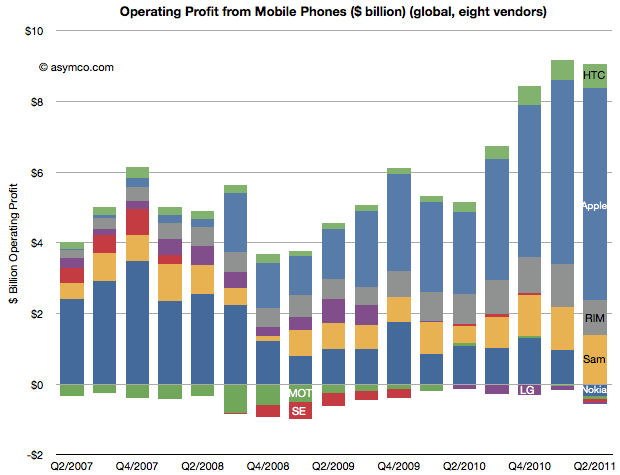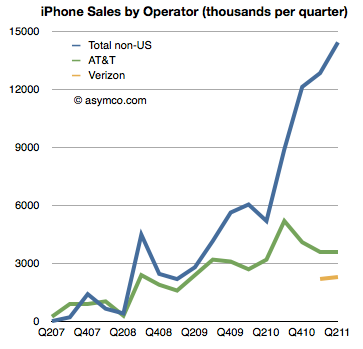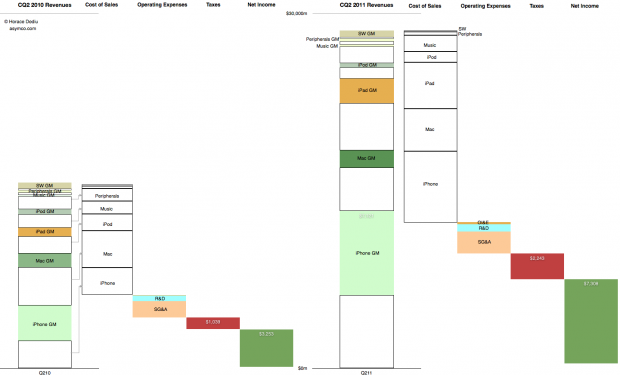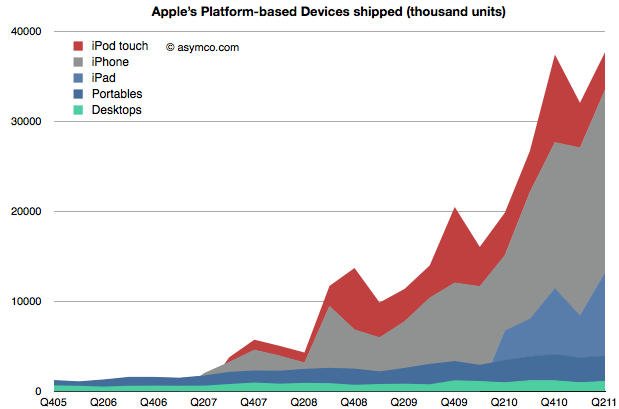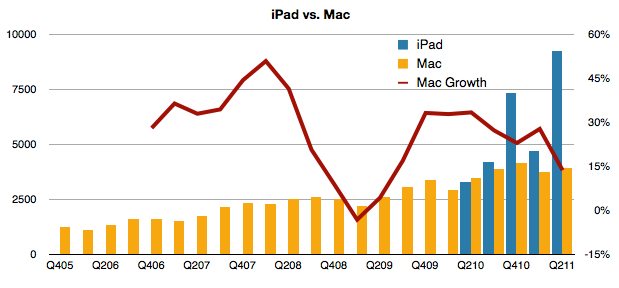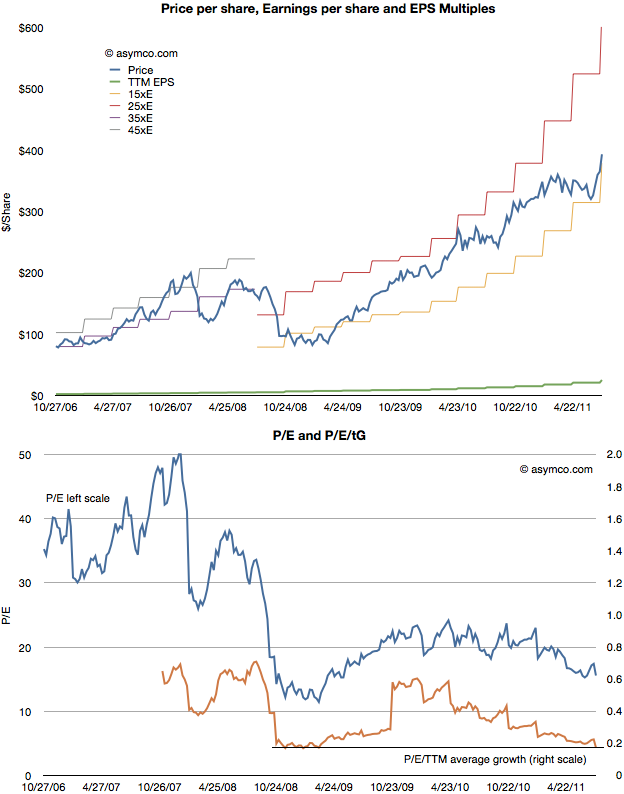The number of Bada phones shipped last quarter is not public, however some assumptions can be made that lead to plausible estimates.
First, we know that Samsung shipped about 3.2 million smartphones in Q2 2010 and that total included Bada and Android (and perhaps even some Windows Mobile).
Second, we know that there were about 19.9 million smartphones in Q2 2011.
Third, Canalys published an estimate that Bada grew by 355% y/y.
So if we knew how many Bada phones shipped in Q2 2010 we could derive the current Bada shipments and also realize how many of the nearly 20 million smartphones from Samsung were actually Android.
The clue is in an estimate from December last year Continue reading “The Samsung hedge: Estimating Bada for Q2 and hence Samsung's Android shipments”


